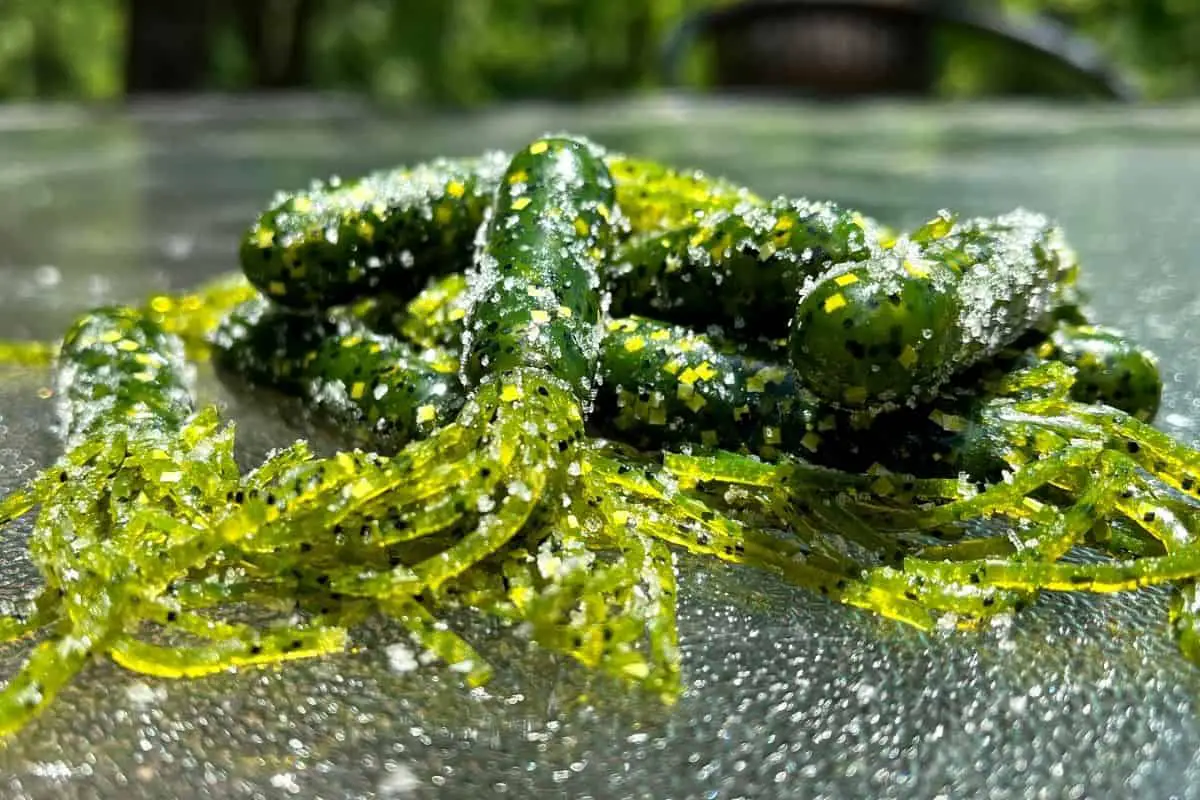The soft plastic tube, or Gitzit, has been a staple in the bass fishing world for decades. Creative anglers have devised many ways to fish this lure, but here are five tried-and-true methods that will catch bass in any waters.
Rigging a Tube Jig With an Insert Tube Head
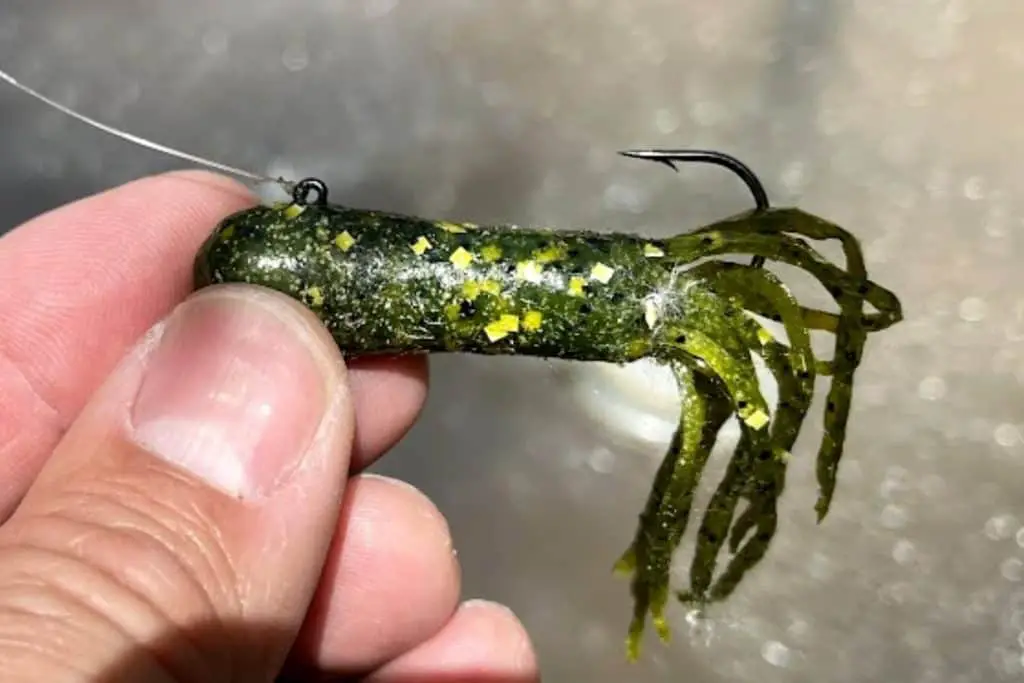
This is my favorite method. Hands down.
Many manufacturers offer a range of insert tube heads. From ultra-finesse 1/16oz versions to heavy 3/4oz flipping models.
When a soft plastic tube is rigged with an insert head, it can be fished in a variety of situations with tremendous success.
The most notable characteristic of an insert tube head is the enticing spiraling drop the lure has when falling on a slack line. So many bass I have caught on a tube have come during this portion of the presentation.
There is no other rigging method that creates this unique action
An insert tube head also allows a bass angler to swim the lure through the water column. From observing on a boat deck or from the shore, the tube first appears to not do much. But when observed underwater, the sliding and swimming action is excellent.
Some of the best smallmouth anglers I have ever fished with utilize the swimming tube to a huge degree of success.
As far as the actual rigging, you can insert the tube head into the cavity of the lure before you tie it to your line, or once the line is tied just insert the hook point near the head where you want the eye of the jig head to be. Slip the molded head through this opening and you are ready to fish.
Rigging the Stupid Tube
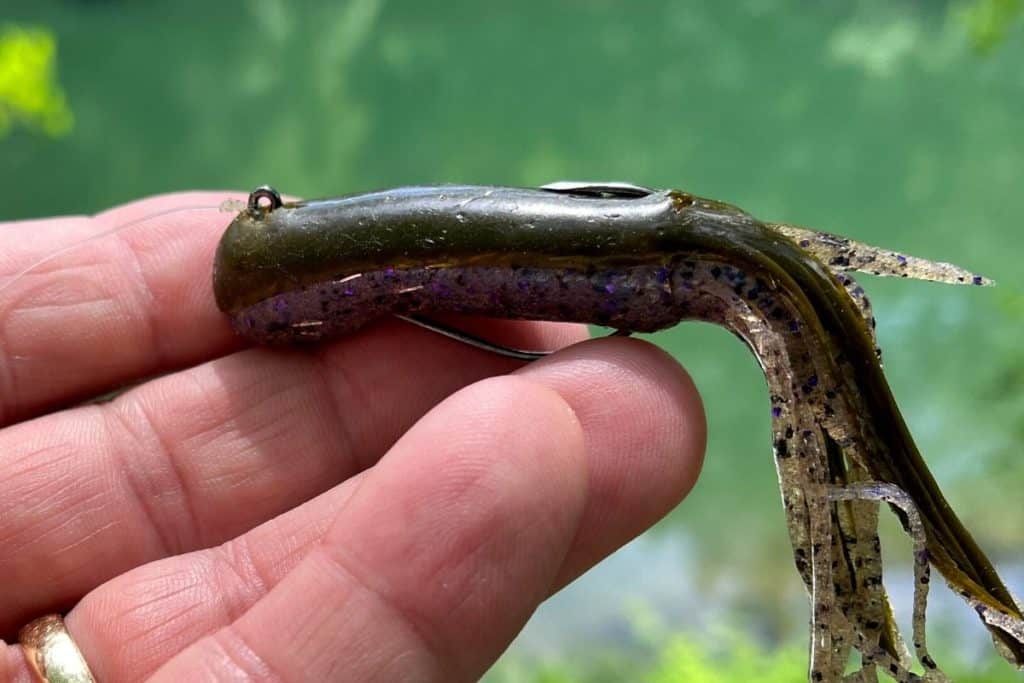
This method also uses an insert tube head, but with a slightly different hook and process.
If you were wondering about how you can avoid snags with the previous rigging style, then this may be the perfect solution for you.
A stupid tube hook will have a 60° line tie instead of the traditional 90° model seen on most insert heads.
To start rigging, slip the hook into the hollow cavity first. Then bring the hook out about ¼” from the head of the tube. Now work the jighead into the cavity as well while threading the hook out and back towards the rear of the tube.
Rotate the head inside the cavity so the line tie is opposite of the exit hole the hook made.
Once the head is at the top of the tube, push the line tie through the plastic.
Now scrunch the tube up and work the hook through it, much like you would a normal Texas-rig, and then Tex-pose the hook point into the plastic on the same side as the line tie.
This makes for a very weedless and snag-free lure that can be dropped into some heavy cover.
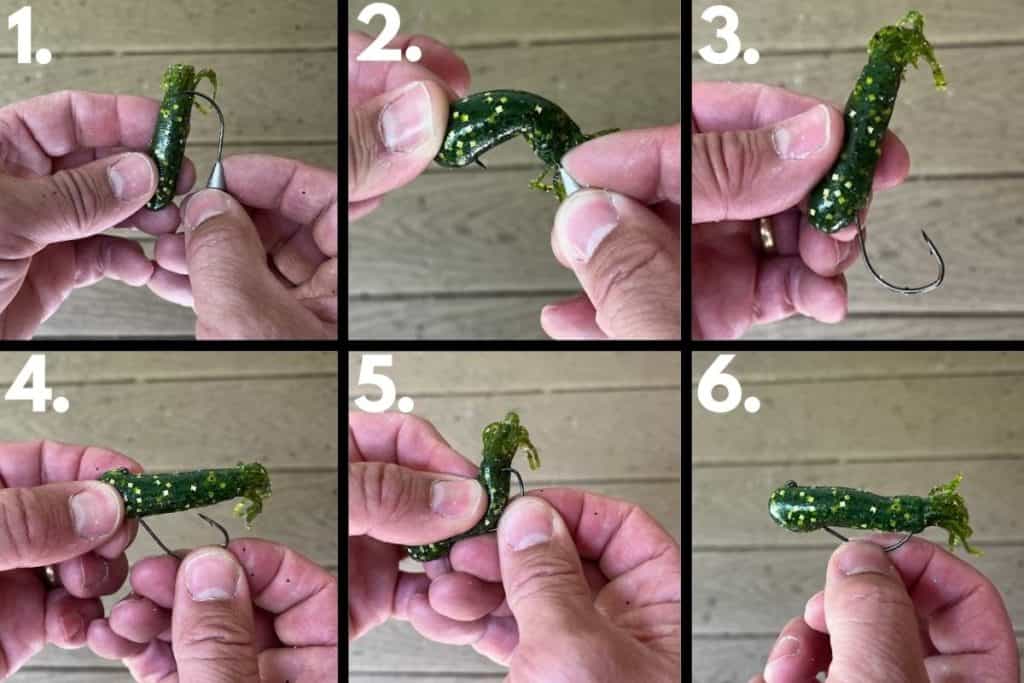
The other noticeable difference between the stupid tube rigging method and the insert tube head is that the stupid tube will slide, or glide, instead of spiral towards the bottom.
Bass love it.
Texas-Rigging a Soft Plastic Tube with a Worm Weight
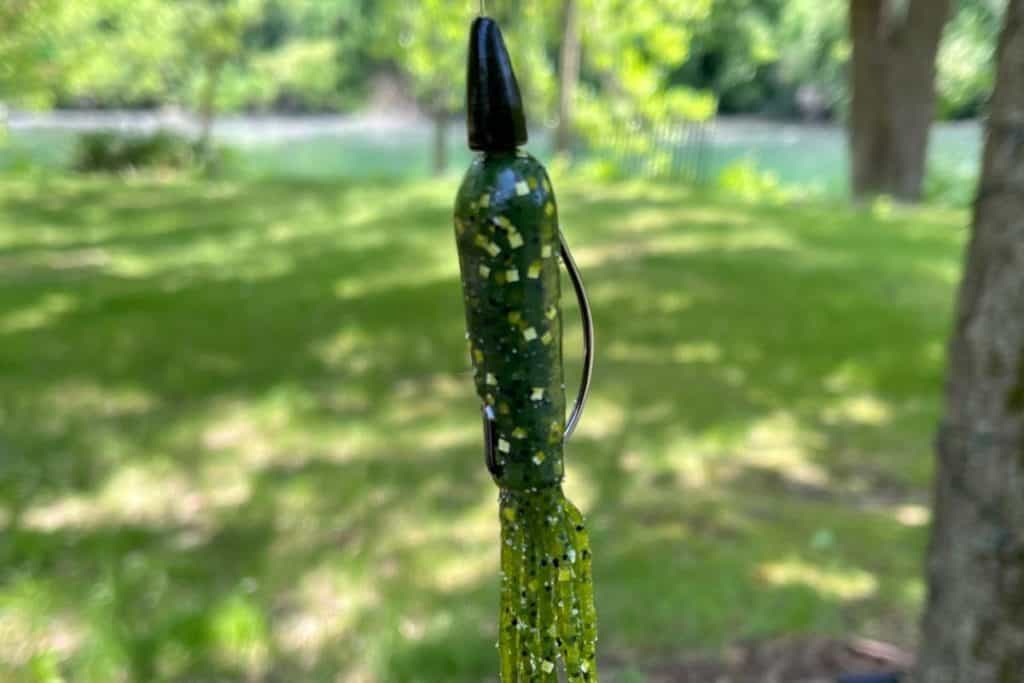
This popular method of rigging a tube makes it considerably more weedless than the previous rigging method – the insert tube head.
This allows anglers to use this lure in any location where the cover is thick and nasty.
Flipping tubes into heavy cover was a staple in the 1990s and still works well today.
In fact, many anglers have moved on to more trendy presentations. The bass in your home waters may have not observed a tube lure rigged like this.
Once the tube has slipped through a brushpile or amongst the vegetation, it then can be dragged along the bottom with tremendous success.
When rigging, lay the hook on the back of the tube. Many companies make hooks specifically for this application. These specialty hooks have a flatter trajectory towards the hook point and lay on the plastic perfectly. You can even place the point into the plastic just a bit to make it even more weedless.
Drop Shotting with a Soft Plastic Tube
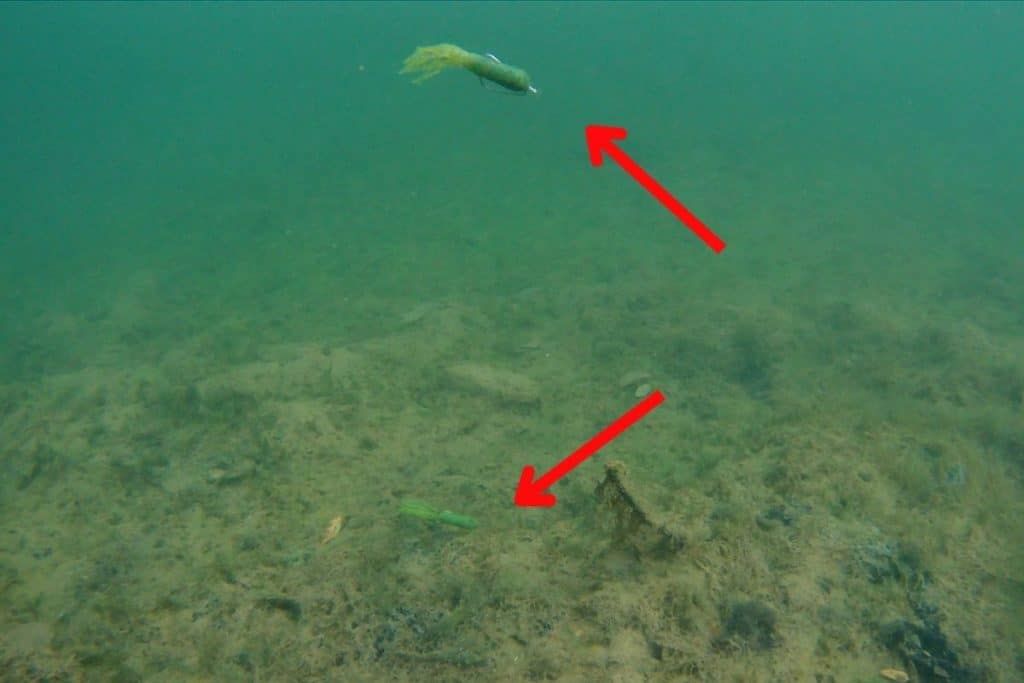
Soft plastic tubes will come in several different sizes. I like to use either the 2 ¾” or 3 ½” versions when drop shotting.
The tube has a do-nothing look to it that bass find irresistible.
As an added bonus, you can use a tube rigged with an insert head as your drop shot weight.
This double-tube rig lets anglers know if the bass are wanting a more bottom-oriented lure or one that is presented up in the water column. There are even those times when you may pull in a bass from each hook.
I also like to use the double-tube rig to experiment with color. I may put a minnow pattern on the top lure and then a brown or green craw color on the bottom one.
Be sure to check your state regulations on how many hooks you can have on one line. It varies from state-to-state.
(Here is an article on drop shot leader length and how it affects lure action.)
Swing Head Jigs and Plastic Tubes
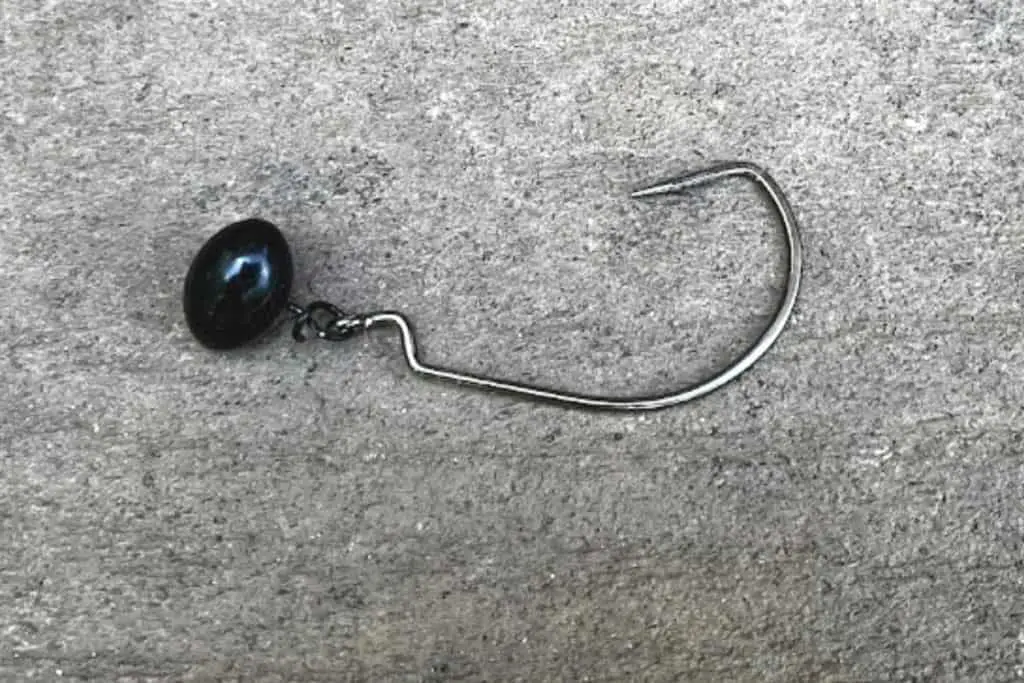
The swing head, or wobble head, has been an ultra-effective presentation that first caught hold several years ago.
The hook is free-swinging from the jig head. This not only can create a very lifelike action, but the lure can also bounce and slide over rocks, wood, and other types of hard cover easily.
A soft plastic tube is a great lure to put behind a swing head jig. It imitates a craw creeping around the bottom of the lake or river.
Scientists have also seen in studies, that bass are much more apt to attack a craw with some missing pincers compared to a morsel that has both arms ready to defend itself.
Makes sense.
Swing heads with a tube lure can be crawled or reeled across the bottom with some speed. The faster retrieve by far works the best on a rocky bottom composition. I have found that gravel is the most effective.
Weightless Texas-Rig and Soft Plastic Tubes
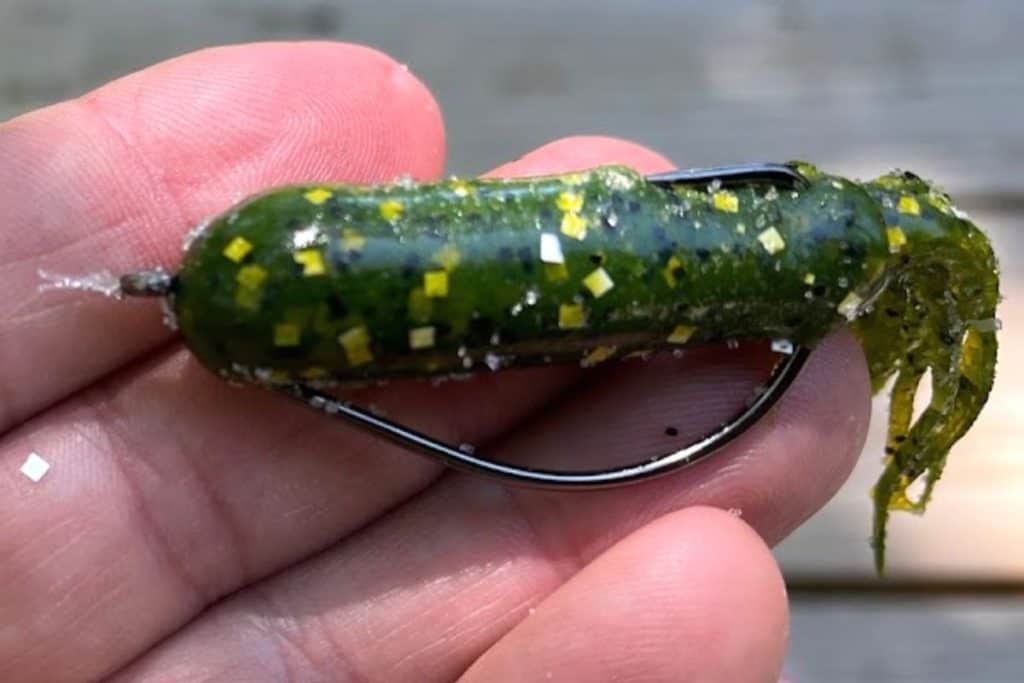
The weightless Texas-rig deserves a section all to itself. By removing the worm weight, the hook is the only thing adding additional weight.
The fall is therefore much slower and more finesse-like.
I love to use the weightless tube around docks and wood when the water has some stain to it. The slower fall rate lets the bass really get a good look and zero in on the lure.
Anglers that use it in the same places as they would a weightless wacky rig will find similar success. And as I mentioned earlier, on heavily pressured waters, this is a presentation that many anglers have forgotten about. It might be something the bass have not seen and are more willing to attack it.
When using a weightless tube rig, I find that color can make a significant difference in the quantity and quality of bites.
If you are feeling as though the bites are few-and-far-between, try going to the other end of the color spectrum. If you were throwing something light, go with a dark color or vice-versa.
A Favorite Soft Tube Presentation – Crackin’ a Tube
The popular fishing television host, Mark Zona, has made this presentation known to many tube enthusiasts.
It uses an insert tube head and spinning gear.
Toss the lure out and let it spiral to the bottom. Once it stops sinking, start to bounce your rod and make sure there is some slack in the line. The tube will vibrate and have the smallest bounces that can draw the attention of bass that are quite a distance away.
The key is the slack line. Bouncing the lure on a tight line will create too large of a hop and often startle the bass that are interested in it.
The bite is a little different. You will not feel a thump. The rod will just load up. Start to reel the fish in and keep catching them.
The below video link will go over this presentation.
Good luck out there and be sure to encourage someone today. You never know how you may change their life forever.
Isaiah 6:8

